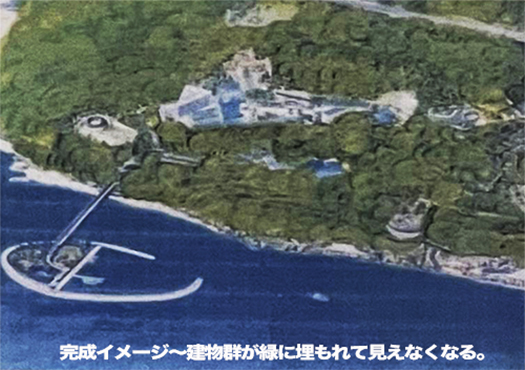
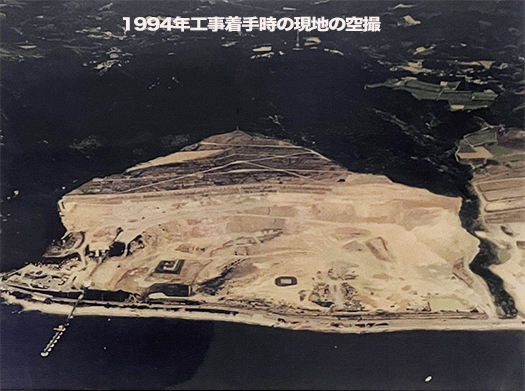
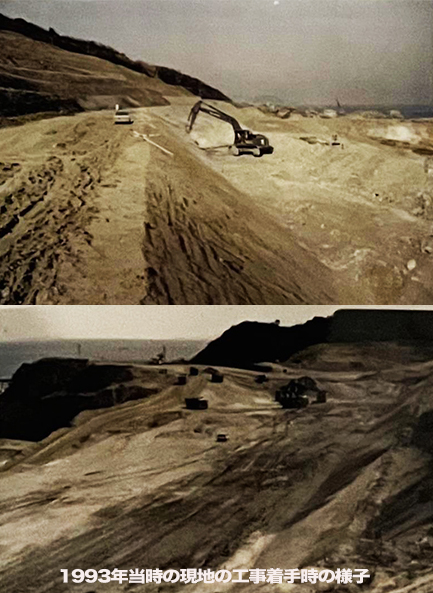
関西新空港は1994年当時の関西経済復興の欠くべからざる人的交流・経済活性化の基盤公共事業と位置づけられていた。経済を考えれば中世の堺の港が果たしていた役割、それが日本の社会変革の中核であったことを顧みただけであきらかだろう。そのために必要な土砂・石材を海上交通で運搬させることを考えれば瀬戸内海地域の島からそれを供出するのがもっとも経済合理性が高い。
いまから30年前の状況では地域総体としてこのことを受容して淡路島はその身を削って関空を産み落としたのだと言える。写真は自然復元の構想図と、破壊された当時の現地の状況。同様の事態では跡地はほぼそのまま放置されたまま。たとえば札幌の都市開発でも市南部の「石切山」から用材が切り出された。経済利便性と自然破壊はトレードオフの関係であることは自明だと思う。
しかしこの1990年代の日本・関西では荒廃せざるを得なかった淡路島の自然環境に対して、それを環境復元する志向をもって対処した。そのように決定したのだけれど、しかし自然環境の復元ということは人類社会ではあまり経験知のないことでもあったのだ。近代以降の開発偏重の日本史で後の自然回復まで取り組んだ開発はほとんどなされてこなかった。札幌の石切山の放置は当たり前だったのだ。
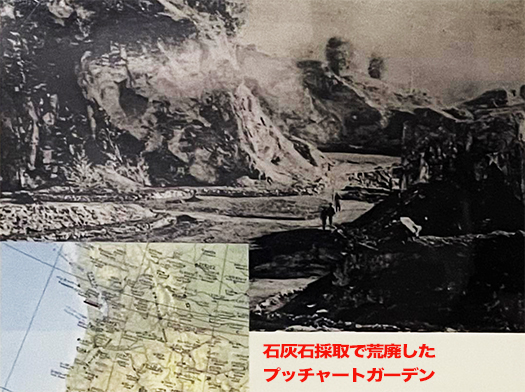
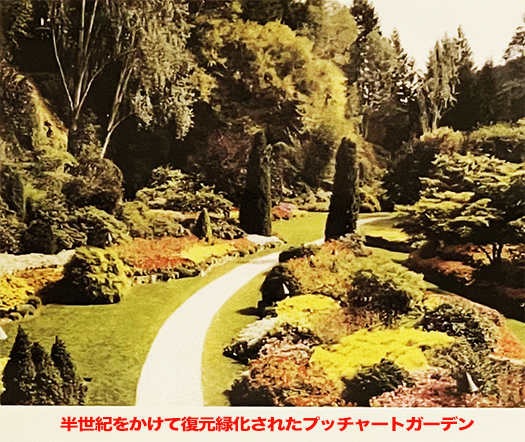
そういうなかでカナダ・バンクーバー近郊のビクトリアに「プッチャートガーデン」という花と緑あふれる公園がある。ここは元はセメント工場として石灰岩を切り出す採掘場だった。荒廃し岩肌が剥き出しになっていたが、オーナーのプッチャート夫妻は自分たちで土を入れ、草木を植え始めた。20世紀初めから始められ20世紀半ばになって現在の庭園の主要部分ができあがったのだとされる。
バブルの余波で一時は民間でゴルフ場リゾート計画も持ち上がった淡路夢舞台の敷地にこのプッチャートガーデンを参考に国と兵庫県の主導で、失われた自然環境の回復という「夢舞台」が展開されていった。土木建築的リフォームに想像力が傾けられたといえる。設計者として安藤忠雄氏が全体計画をまとめ上げていくことになる。
English version⬇
Can Human Society Restore the Lost Nature? Awaji Yumebutai-2]
A large-scale international airport is absolute social capital for the development of the Kansai economy. Awaji Island “cut itself down” by land reclamation and gave birth to the Kansai International Airport. …
In 1994, the new Kansai Airport was positioned as a fundamental public works project for human exchange and economic revitalization, an indispensable element of the economic recovery of the Kansai region. It is clear from the economic perspective that the port of Sakai in the Middle Ages played a central role in Japan’s social transformation. The most economically rational way to transport the earth, sand, and stones necessary for this was to use marine transportation to supply them from the islands of the Seto Inland Sea region.
It can be said that 30 years ago, the Awaji Island accepted this situation as a whole region, and it was the island of Awaji that gave birth to the Kansai International Airport at the expense of its own people. The photo shows a conceptual plan for natural restoration and the situation of the site at the time of the destruction. In similar situations, the site has been left almost untouched. For example, in the urban development of Sapporo, lumber was quarried from “Ishikiriyama” in the southern part of the city. It is obvious that there is a trade-off between economic convenience and destruction of nature.
However, in the 1990s, Japan and Kansai dealt with the natural environment of Awaji Island, which had to be devastated, with the intention of restoring the environment. Although they made such a decision, however, the restoration of the natural environment was something that human society had little experience with. In the development-oriented history of Japan since the modern era, there has been very little development that has addressed the restoration of the natural environment. The neglect of Ishikiriyama in Sapporo was a common occurrence.
Among these, there is a park full of flowers and greenery called “Putchart Gardens” in Victoria, near Vancouver, Canada. The site used to be a limestone quarry for a cement factory. The owner, Mr. and Mrs. Putchart, began to plant trees and plants by themselves, and it is said that the main part of the present garden was created in the mid-20th century.
In the aftermath of the bubble economy, a private golf course resort project was proposed at one time on the Awaji Yumebutai site, but the national government and Hyogo Prefecture took the lead in developing a “dream stage” to restore the lost natural environment, based on this Putchart Garden. It can be said that the imagination was focused on civil-architectural remodeling. Tadao Ando, the architect of the project, was responsible for the overall plan.
Posted on 2月 27th, 2023 by 三木 奎吾
Filed under: 日本社会・文化研究







コメントを投稿
「※誹謗中傷や、悪意のある書き込み、営利目的などのコメントを防ぐために、投稿された全てのコメントは一時的に保留されますのでご了承ください。」
You must be logged in to post a comment.